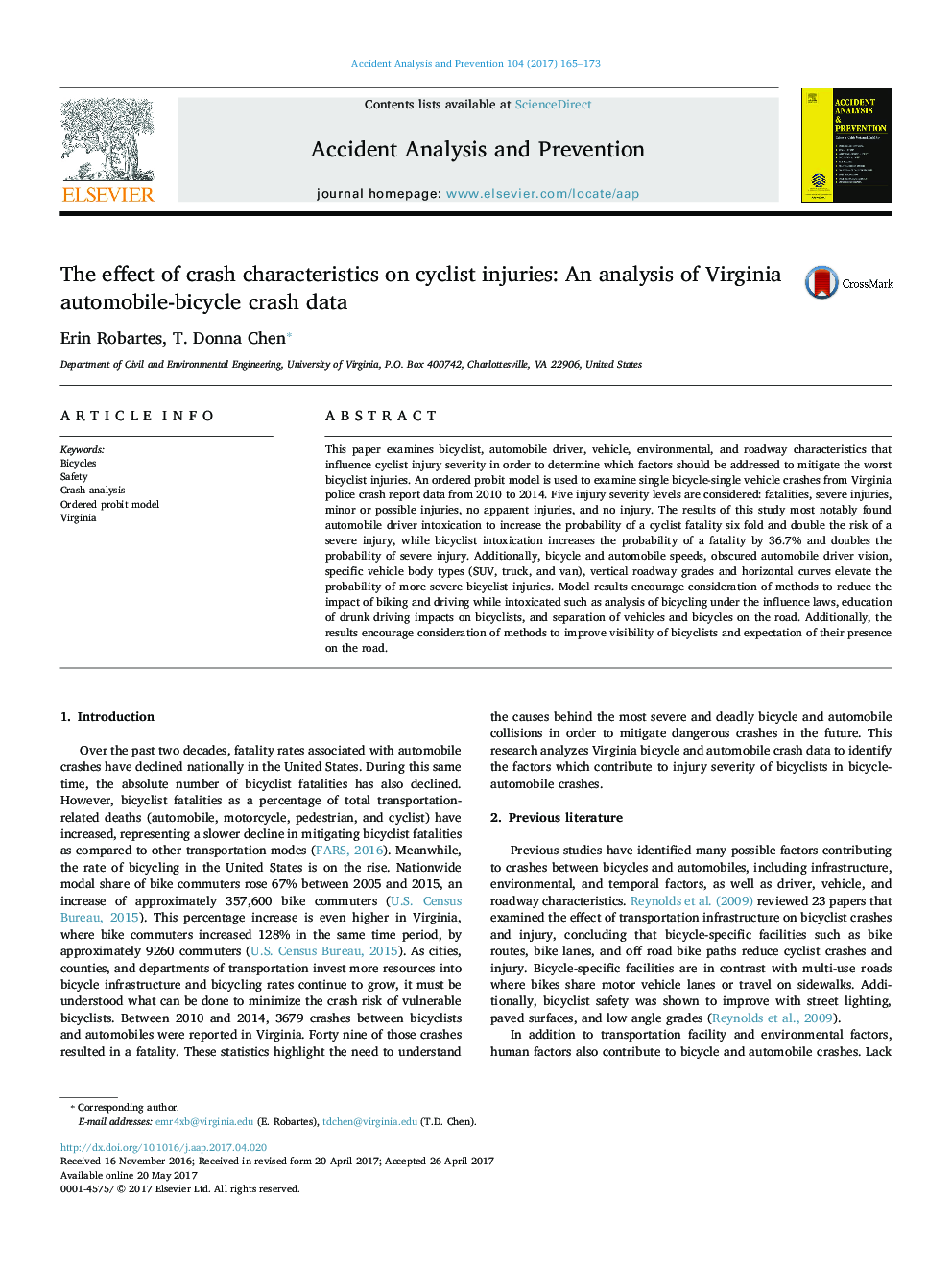| Article ID | Journal | Published Year | Pages | File Type |
|---|---|---|---|---|
| 4978632 | Accident Analysis & Prevention | 2017 | 9 Pages |
Abstract
This paper examines bicyclist, automobile driver, vehicle, environmental, and roadway characteristics that influence cyclist injury severity in order to determine which factors should be addressed to mitigate the worst bicyclist injuries. An ordered probit model is used to examine single bicycle-single vehicle crashes from Virginia police crash report data from 2010 to 2014. Five injury severity levels are considered: fatalities, severe injuries, minor or possible injuries, no apparent injuries, and no injury. The results of this study most notably found automobile driver intoxication to increase the probability of a cyclist fatality six fold and double the risk of a severe injury, while bicyclist intoxication increases the probability of a fatality by 36.7% and doubles the probability of severe injury. Additionally, bicycle and automobile speeds, obscured automobile driver vision, specific vehicle body types (SUV, truck, and van), vertical roadway grades and horizontal curves elevate the probability of more severe bicyclist injuries. Model results encourage consideration of methods to reduce the impact of biking and driving while intoxicated such as analysis of bicycling under the influence laws, education of drunk driving impacts on bicyclists, and separation of vehicles and bicycles on the road. Additionally, the results encourage consideration of methods to improve visibility of bicyclists and expectation of their presence on the road.
Related Topics
Physical Sciences and Engineering
Chemical Engineering
Chemical Health and Safety
Authors
Erin Robartes, T. Donna Chen,
